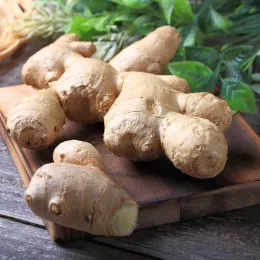Macarons seem to be everywhere these days. The delightful, colorful treats are springing up in stores in a huge variety of flavors. In addition to the plethora of versions available in bakeries and patisseries, home bakers can make versions of their own.

Les Petits Macarons: Colorful French Confections to Make at Home, a new book from ICEPastry & Baking ArtsChef Instructor Kathryn Gordon and Director of Center for Food Media Anne E. McBride helps demystify the delicate, delicious pastries. With dozens of flavor combinations and a variety of methods, the book is a chance to begin making your own macarons at home. The book contains recipes for shells flavored with pistachio, blackberry, coconut, and red velvet, filled with options such as sesame buttercream, strawberry guava pâte de fruit, crunchy dark chocolate ganache and lemon curd.
Chef Kathryn also included savory options like shells made with saffron, parsley, and ancho chile paired with fillings like hummus, foie gras with black currant, and duck confit with port and fig. The options for customization are endless! In addition to a huge variety of flavors, Les Petits Macarons also outlines four different methods for making the cookies. Other macaron cookbooks focus on one, sometimes two, but Les Petits Macarons features the classic French, Italian and Swiss methods, as well as a fourth quick-and-easy type that helps just about any home baker achieve macarons. As we gear up for the book’s release on October 4, we asked Chef Kathryn and Anne about the book, the recipes and macaron mania.
Why do you think macarons are so popular right now?
Chef Kathryn: At first, I think they catch people's attention because they’re so pretty. Often a display looks like jewels. And they’re much more manageable as a small treat than a larger cupcake, so that’s appealing to people. Of course, they also taste good — so people don’t usually stick with eating one, even if they think they can!
Anne: I think it’s because they are the perfect treat: If you want just a little something sweet in the middle of the afternoon or after dinner, one macaron will take care of that craving. If you can’t commit to one flavor and want a variety of sweet tastes, you can have two or three without feeling full. They are also really pretty — sometimes it’s that simple. Between their colors and the beautiful stores in which they are typically sold, they make for a very aesthetically pleasing experience.

How did you develop the recipes?
Chef Kathryn: I had quite a collection of recipes from making macarons in production in various restaurants. It has always fascinated me that top pastry chefs make macarons in slightly different ways to each other. For a cookie with only four basic ingredients, you wouldn't think there were so many nuanced ways to combine them! To tell you the truth, I approached the recipes for the book in a completely theoretical aspect: I put about 60 macaron recipes into an excel spreadsheet with the bakers' percentages for each of the four ingredients, and took an average! Where did you find inspiration for the more unusual recipes?
Chef Kathryn: Just from my experience eating and cooking in various places. I tried to think of my favorite flavors, and have a nice balance in the book. So maybe it comes across as an “unusual” mix, but it’s just what I like to eat! But then again, I’m the type of person who will order the most unusual dessert on a menu.

What are some of your favorite recipes in the book?
Chef Kathryn: My favorite filling is the popcorn pastry cream! Most macaron cookie shells are neutral (almond) flavored. We think we are eating a lemon macaron when it is colored yellow and filled with lemon curd. We do include recipes for flavored macaron shells, but the (strong) filling flavor carries the macaron. In regards to the shells, I had always bothered me that what I could read about how macarons worked implied they were leavened with air trapped in the meringue. But it didn’t make sense, because of all the extended folding involved to make macaron batter. I figured out they also leaven through steam — and in fact, how they bake successfully has quite a lot in common with other steam-leavened products. So I used this deduction to create a unique macaron method, Kathryn's Easiest Macaron Method
Anne: Lemon Marmalade with Campari and Apricot-Vanilla Jam are probably my two favorites. I love eating them but they are also more unexpected than buttercream or ganache when giving macarons to others. I also love Tomato Confit, for savory macarons, and Fleur de Sel Caramel — a basic that never fails.
What is the one thing you want people to know about making their own macarons?
Chef Kathryn: I think the first time you try a recipe at home in your particular oven, it’s hit or miss if it works. Ovens are temperamental, and so are macarons. Once you come up with a method that works for you — stick with it. There is no master macaron technique that will work for everybody every time or the top pastry chefs in the world would have more consensus on how they bake them. We include the theory behind each technique, as well as a troubleshooting section (with hints and pictures) to help you determine what your oven might be doing to your macarons, to help you solve the issue. Then your next batch will be delicious and beautiful!
Anne: It’s not that hard! It takes a bit of planning and organization, and the first time it’s best to not plan on giving them away because that adds unnecessary stress. Making macarons allows you to really know your equipment, to say the least, since some slight variations—in oven temperature, in air humidity, in folding, for example—can yield very different results. But once you’ve made them once or twice and can account for all these variations, it’s an amazingly great and fun treat to bake. And because you can make so many kinds, you never stop discovering new ways to enjoy making them.
Photo credit: Steve Legato, photographer



